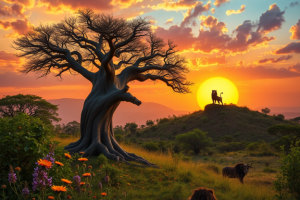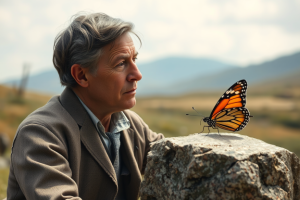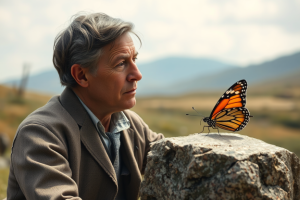
COMPILED BY STAFF REPORTER
With more than 80 ethnic groups, Ethiopia is a home to several ethnic groups who have their own untouched indigenous cultural values and traditional rites.
The Mursi and the Surma tribes known for their lip plates and body scarification, the Hammer renowned for their bull jumping rites and hair style, the Dorzes popular for their artistically patterned woven cotton clothes and tall bee-hive shaped huts, Hararis’ centuries old basket weaving tradition, are among the others that have their own cultures, language, tradition and life style.
Ethiopia is a land filled with historical, cultural and natural treasures tracing back to the time of King Solomon and Queen of Sheba.
Ethiopia is the only African country that developed its own script in the second century after Christ and its own calendar that is around seven years behind the Gregorian calendar.
Ethiopia is the only African nation that was never colonized and the only African nation. A country, rich in its historical and cultural heritages, Ethiopia is also one of UNESCO’s world heritage centers, and the first in Africa for registering its intangible and tangible heritages under UNESCO’s cultural heritage list.
With mountains reaching over 4,500 meters high, Ethiopia is the roof of Africa, the source of the Nile and the origin of coffee
Above all, it is a country with a culture and traditions dating back more than 3,500 years. This is Ethiopia, land of origins.
Ethiopia and its history is the story of Africa at its inception. Archaeologists and anthropologists commonly count Ethiopia as the origin of mankind. In 1974 the oldest human remains ever were discovered here. The 4.4 million old bones of Homo RamidusAfarensis, were found in Ethiopia’s Afar region – the previous record was held by “Lucy” or “Dinkinish” (Amharic for “wonderful”), who at 3.2 million years was a relative youngster.
Ethiopia has extensive historic sites, particularly in the north of the country, where the tourists can view buildings dating from the first millennium BC, the stelae and tombs of the Axumite kings, Rock Hewn Churches dating from the 4th century, the monasteries of Lake Tana and the 13th century monolithic Rock Hewn Churches of King Lalibela in Wollo.
In the east, the 1000 year old city of Harrar, with its more than 99 mosques, is considered as the fourth holiest place in Islam, after Mecca, Median. South of Addis Ababa there are number of Neolithic sites, including the 1.5-1.8 million year old site at MelkaKunture (Oromia State) and the 400 stelae at Dilla in Sidamo (Southern Nations, Nationalities and Peoples’ State). Elsewhere in the southern region there are remote, medieval monasteries and in Jimma, Oromia State, there is the recently restored palace of Abba Jiffar, the last king of the area.
Ethiopia is a land of great variety, from the high peaks of the Semien Mountain in Amhara to the below sea-level Danakil Depression in the Afar States, tropical forests, lakes, savannah and deserts. In Bale National Park in Oromia, home of many endemic mammals and birds, visitors can see unique alpine fauna and flora, volcanic lakes and trout filled streams.
For big game safaris, there are the Omo and Mago National Parks in the Southern Region, with their fascinating Mursi and Hamer villages.
What unites Ethiopia’s many people is primarily their shared independent existence. Ethiopia was never colonized, its people put up a continuous, spirited and vigorous resistance. Ethiopia is Ethiopian and this will be obvious to the visitor from the moment of arrival in Addis Ababa. Courtesy and hospitality are prized qualities throughout the country.
With its combination of history and culture, ethnic diversity, stunning and varied scenery, wildlife and birdlife (there are more than 850 species recorded, with 29 endemics), Ethiopia is truly unique in Africa.
The other special part about Ethiopia is its stable security system. Despite its location in the Horn of Africa, Ethiopia is a very safe country to visit, and Addis Ababa is still one of the safest capitals in Africa. There is little incidence of personal crimes such as assault and robbery, and the country’s security forces have taken great measures to prevent terrorists from instigating violence that could arm the safety of residents and visitors and disrupt the business community, which has registered significant growth.
Traveling across Ethiopia one will experience great heights and plummeting depths unfolding at every awe-inspiring turn, from the majestic Afro-Alpine Simien Mountains and the softer Bale Mountains, both in the highlands, to the Danakil Depression-the lowest and hottest place on Earth.
Ethiopia has peaks over 4000m, weird and wonderful geothermal features, hot springs, active volcanoes and huge salt beds but also lush rain forests and fertile farmlands, rolling savannah and cool underground caverns. And the fastest flowing rivers, stunning waterfalls and glistening lakes such as those dotting the Great Rift Valley are also the other magnificent blessings of the country.
The range of terrain and climate make Ethiopia the fourth largest biodiversity zone on Earth – with more unique species of flora than any other country in Africa. Touring Ethiopia visitors will see the world’s rarest wolf, the twisted horned, shaggy mountain Nyala and the shy Walia ibex. Further, they will enjoy mingling with the gelada baboons in their natural habitat and may even have the chance to spot the Abyssinian lion with his black mane.
There is all these plus typical African fauna such as elephants, hippos and zebras. So diverse and precious are all these natural resources that Ethiopia now has 24 national parks and four Biosphere Reserves to preserve and protect them.
A gentle stroll through beautiful surroundings or a walk on the wild side – Ethiopia offers walking, hiking and trekking at every level and all year round. So you can stretch yourself along the Roof of Africa, the Simien Mountains (a UNESCO Natural World Heritage Site), and hike in Gheralta or be thrilled by ascending the active Erta Ale volcano – the ‘smoking mountain’. Or take an easy walk or horseback ride in the lush Harena Forest of Bale Mountains to explore deep gorges and lakes. To ensure you make the most of every step along the way most operators will arrange the transport of your luggage by vehicle or mule.
Sources: Land of Origins
The Ethiopian herald December 4/2020




